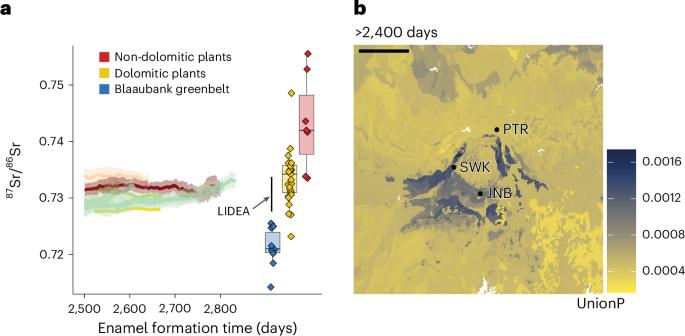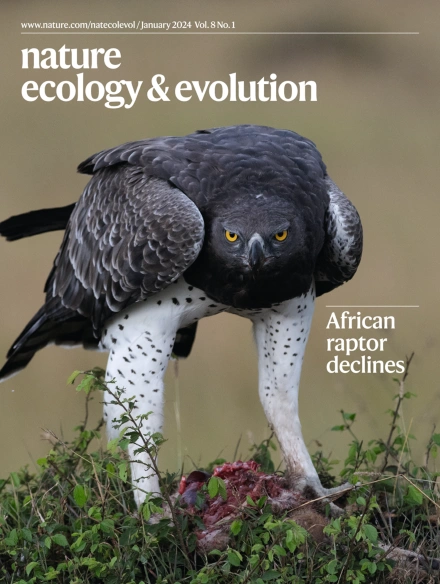Isotope analysis of fossil teeth provides insight into the habitat and life histories of the early hominin Paranthropus robustus
IF 13.9
1区 生物学
Q1 ECOLOGY
引用次数: 0
Abstract
Geochemical chronologies in surface increments and exposed cross-sections of naturally fractured hominin enamel from the South African sites of Swartkrans and Kromdraai indicate that Paranthropus robustus exploited both forest and grassland habitats, and that individuals did not move on the landscape in a manner analogous to extant African apes.

牙齿化石的同位素分析提供了对早期人类傍人粗壮人的栖息地和生活史的深入了解
地球化学年代学表明,在南非斯瓦特克兰和克罗姆德拉伊遗址发现的地表增加物和自然断裂的人族珐琅的暴露横截面表明,粗壮傍人既利用森林栖息地,也利用草原栖息地,而且个体在景观上的移动方式与现存的非洲猿类不同。
本文章由计算机程序翻译,如有差异,请以英文原文为准。
求助全文
约1分钟内获得全文
求助全文
来源期刊

Nature ecology & evolution
Agricultural and Biological Sciences-Ecology, Evolution, Behavior and Systematics
CiteScore
22.20
自引率
2.40%
发文量
282
期刊介绍:
Nature Ecology & Evolution is interested in the full spectrum of ecological and evolutionary biology, encompassing approaches at the molecular, organismal, population, community and ecosystem levels, as well as relevant parts of the social sciences. Nature Ecology & Evolution provides a place where all researchers and policymakers interested in all aspects of life's diversity can come together to learn about the most accomplished and significant advances in the field and to discuss topical issues. An online-only monthly journal, our broad scope ensures that the research published reaches the widest possible audience of scientists.
 求助内容:
求助内容: 应助结果提醒方式:
应助结果提醒方式:


